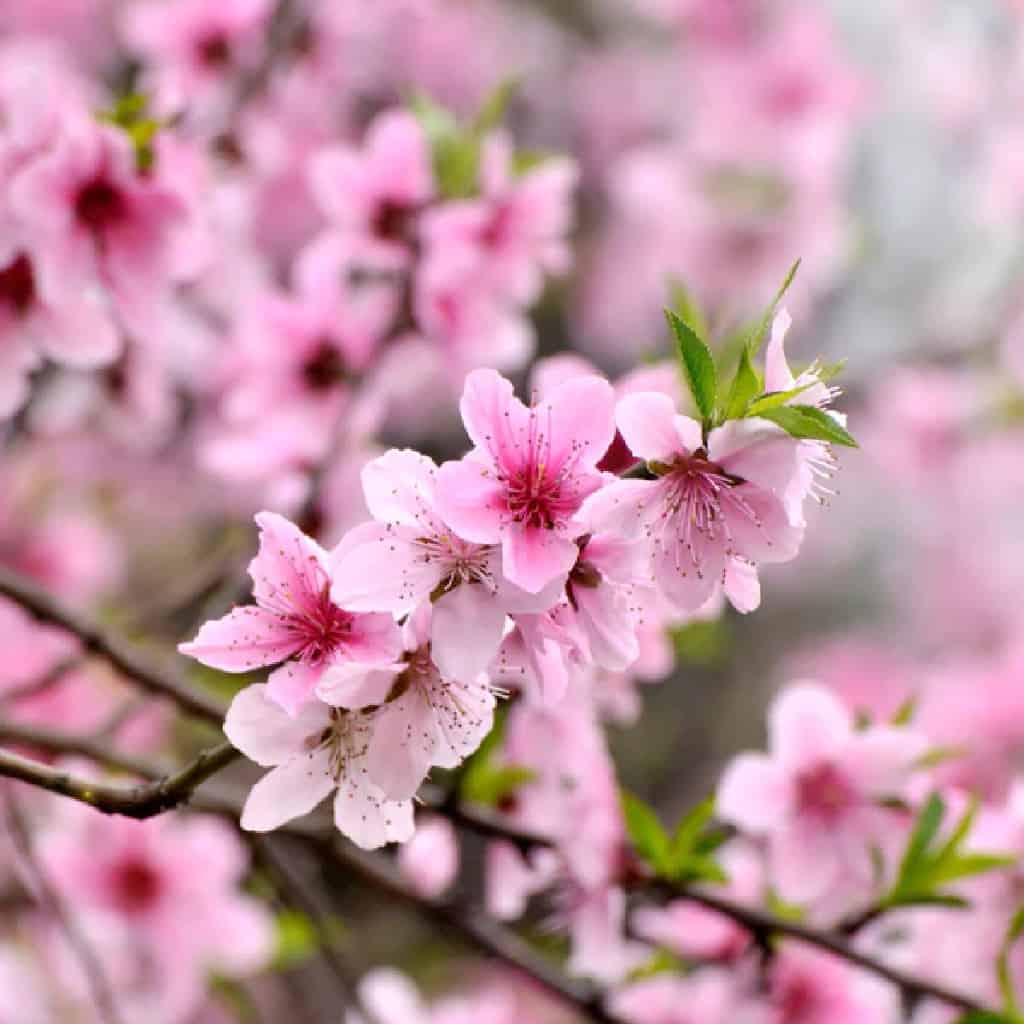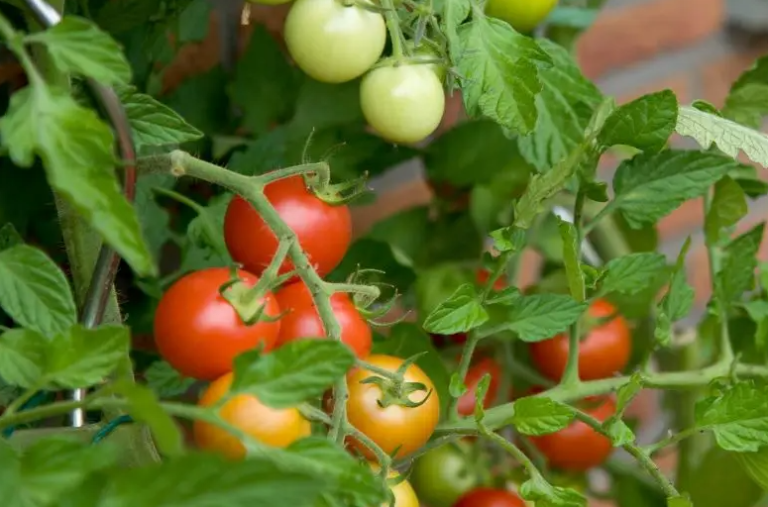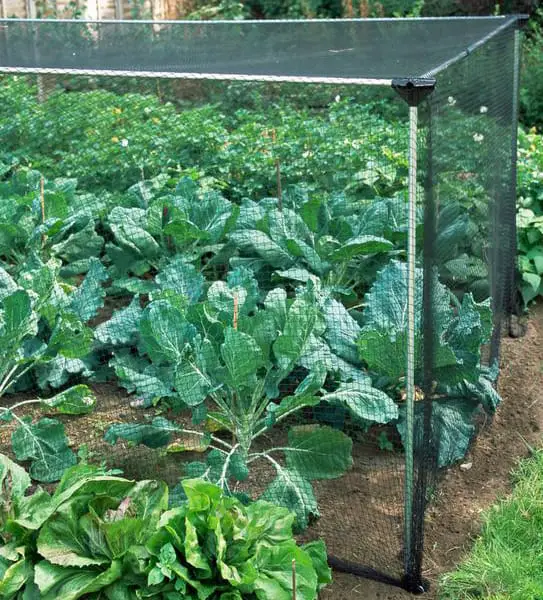Are Elberta Peach Trees Self Pollinating? How to Hand-Pollinate

Peach orchards are a symphony of nature’s beauty. If you’re a proud owner of Elberta peach trees, you might be curious about their pollination habits: Are Elberta Peach Trees Self Pollinating?
In this guide, we’ll find out if Elberta peach trees self-pollinate. We’ll also learn the art of hand-pollination to ensure a bountiful peach harvest.
Discover the secrets that turn blossoms into fruit. We will delve into the world of Elberta peaches. Here, my touch becomes a vital force in the symphony of nature’s growth.
Characteristics of Elberta Peach Trees
Elberta peach trees (Prunus persica ‘Elberta’) are renowned for their juicy, sweet peaches. The Elberta peach tree is known for its vigorous growth, making it a popular choice for home orchards and commercial fruit production. These trees are growing in U.S. Department of Agriculture plant hardiness zones 5 to 9.
Elberta peach trees require well-drained soil with a pH of 5.6 to 6.5. They need full sun exposure to thrive. They are also resilient to frost and cold temperatures, making them suitable for a wide range of climates.
Early to mid-spring brings pink blossoms, and late summer brings ripe freestone fruits. Peaches have sweet, tart flesh and tender, reddish-yellow skins. With proper care and maintenance, these trees can provide an abundance of delicious peaches year after year.
The Elberta peach tree’s exceptional characteristics extend beyond just its fruit. It also includes resilience and adaptability to various growing conditions. Knowing these traits can help home gardeners and orchardists. They can maximize their Elberta peach trees’ potential. They can do this through proper pollination techniques. They can do this through proper pollination techniques.
Are Elberta Peach Trees Self-Pollinating?

Elberta Peach Trees are self-pollinating, meaning they can produce fruit with only one plant. These trees exhibit what is known as “self-thinning.” Excess fruits drop early in the season, allowing the remaining ones to develop more fully.
Elberta peach trees can self-pollinate. But, only using this may not give the best results.
It is recommended to cross-pollinate your Elberta with another peach tree, such as the Red Haven Peach Tree, to ensure a higher yield. These trees produce large, juicy yellow fruit. It is great for fresh eating, canning, freezing, and baking.
Why Hand-Pollination May Be Necessary
Hand-pollination may be necessary for Elberta peach trees due to a variety of reasons. Firstly, the availability of natural pollinators such as bees and other insects may be limited. This is especially true in urban or densely populated areas. Hand-pollination ensures the transfer of pollen between male and female flowers. It increases the chance of successful fruit set.
Additionally, unfavorable weather conditions can hinder natural pollination, leading to reduced fruit production. Gardeners can hand-pollinate Elberta peach trees. This lets them control the process and ensure that every flower gets enough pollen. This proactive approach not only increases the yield but also contributes to the overall health and vitality of the tree.
Furthermore, hand-pollination allows growers to selectively cross different varieties of peaches. This creates unique hybrids with desirable traits such as taste, size, and pest resistance. This level of control over pollination can lead to improved fruit quality and a more diverse range of cultivars available to consumers.
Gardeners can grow more crops. They can also help make farming more sustainable and resilient. They can do this by understanding why Elberta peach trees need hand-pollination.
The Pollination Factors for Elberta Peach Trees
1. Bees: Nature’s Pollination Maestros
Nature’s pollination maestros, bees, play a crucial role in the life of Elberta peach trees. As they flit from flower to flower, they transfer pollen, facilitating the fertilization process. Encouraging a healthy bee population in your orchard can greatly boost cross-pollination.
2. Wind: A Silent Pollinator
While bees are the primary pollinators, the wind also plays a silent role. Elberta peach trees release pollen into the air, and a gentle breeze can carry it from one blossom to another. While not as reliable as bee pollination, the wind can still contribute to the overall success of pollination.
How to Hand-Pollinate Elberta Peach Trees (Step-by-Step)
Hand-pollinating your Elberta peach trees can be a rewarding and essential practice to ensure a bountiful harvest. The process involves transferring pollen from the stamen of one flower to the stigma of another. This encourages the development of fruit.
Step 1. Identifying the Right Time
Timing is everything when it comes to hand-pollination. Wait until the flowers are fully open and the stigma is receptive. This is usually during the mid to late morning when the blossoms are at their peak.
Step 2. Gather Your Tools
Equip yourself with a small, soft brush or cotton swab. These tools allow you to delicately transfer pollen without causing damage to the fragile peach blossoms.
Step 3. The Art of Transfer
Gently collect pollen from one flower and transfer it to the stigma of another. Imagine yourself as nature’s assistant, aiding the process that bees would naturally orchestrate. Ensure a thorough but delicate transfer to enhance the chances of successful fertilization.
Step 4. Repeat the Process
For optimal results, repeat the hand-pollination process across multiple blossoms. This mimics the varied pollination sources that a thriving bee population would
By taking an active role, you boost your yield chances. You also gain a deeper appreciation for your orchard’s intricacies.
By taking this hands-on approach, you can get to know your peach trees better and enjoy seeing them grow and develop.
Best Practices for Successful Elberta Peach Trees Pollination
When it comes to successful pollination, timing is everything. Knowing when different plants bloom can greatly help you have a good harvest. Coordinating pollination efforts accordingly is important.
Additionally, diversity in plant selection can promote cross-pollination. It ensures a healthy genetic exchange and a robust fruit set. Using natural pollinators like bees and butterflies. Also, adding habitat enhancements like planting wildflowers or providing nesting sites can improve pollination.
Another best practice for successful pollination is optimizing environmental conditions. Proper soil moisture levels and adequate nutrients support healthy plant growth. This can contribute to more prolific flowering and increased pollen production. Additionally, avoiding pesticide use during bloom periods is crucial to protect the health of pollinators and prevent interference with their essential role in the pollination process.
Use these best practices for successful pollination in your gardening or farming. They will boost fruit set and yield while promoting ecosystem health.
Each step has a vital role. They involve precise timing and diverse plant selection. They also involve creating a supportive environment for natural pollinators.
Conclusion: Nurturing Your Peach Bounty
In conclusion, Elberta peach trees do self-pollinate some. But, adding cross-pollination and maybe hand-pollination can greatly boost your harvest. Embrace the natural dance of bees and the wind. When needed, take on the role of a pollination artist. Delicately ensure the transfer of life-giving pollen.
By understanding Elberta peach tree pollination, you’re not just growing fruit. You’re fostering an ecosystem in your backyard. So, whether you’re a seasoned orchardist or a novice enthusiast, let the blossoms bloom and the peaches flourish under your caring hand. Your future harvest of succulent Elberta peaches awaits—a testament to the delicate interplay of nature and human touch.
We understand the delicate balance of self-fertile traits and the need for cross-pollination. Nurturing an Elberta peach tree is more than just planting. Pruning, an essential chore in any orchard, takes on added significance with the susceptibility of Elberta trees to peach leaf curl.
As we prune, pollinate, and wait for ripening, we become stewards of a tradition. The fragrant blossoms of an Elberta tree symbolize a harvest and a connection to nature’s rhythm. They also symbolize the allure of a well-tended garden.
As mid to late September approaches, the anticipation of ripe, yellow freestone peaches builds. Hand-pollination becomes a skill. It’s not just for making fruit but for keeping heirloom traits. The legacy of an Elberta peach tree lies not only in the fruit it bears but also in the hands that tend to it.
FAQs
What are the Pollination Requirements for Elberta Peach Trees?
Elberta peach trees require well-drained soil, adequate sunlight, and proper spacing for optimal pollination. Ideal growing conditions play a significant role in successful fruit production.
Can Elberta Peach Trees Be Hand-Pollinated?
Yes, hand-pollination is a viable option for Elberta peach trees. Learn the methods to transfer pollen by hand. This is especially important when natural pollination may be lacking.
How Do I Know if My Elberta Peach Tree is Successfully Pollinated?
Signs of successful pollination include visible changes in the flowers. These include petal drop and the growth of small fruits.Monitoring these cues helps ensure a fruitful harvest.
What Challenges Might Affect Pollination in Elberta Peach Trees?
Common challenges include adverse weather conditions, insufficient pollinators, or poor tree health. Identifying and addressing these challenges is essential for fostering a robust pollination process.
Are there specific pollination requirements for Elberta Peach Trees?
Yes, Elberta Peach Trees thrive with well-drained soil, ample sunlight, and proper spacing. Meeting these pollination requirements is crucial for optimal fruit development.
Can Elberta Peach Trees solely rely on self-pollination?
While Elberta Peach Trees can self-pollinate to some extent, cross-pollination often enhances fruit set. Recognizing the importance of both methods contributes to a more fruitful harvest.







